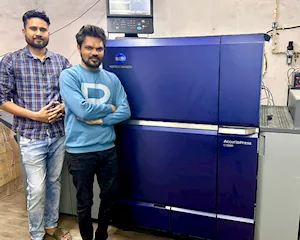When it comes to trends, we have the tendency to look towards the proverbial West to prepare for things to come.
So when the rise of digital media hit hard on printed newspapers in America and Europe, the general consensus was that the trend will replicate itself in India sooner or later.
Years went by and this did not happen.
The recent report on newspaper circulation figures actually put all fears to rest. On 8 May 2017, the Audit Bureau of Circulation (ABC) announced that circulation of India’s print publications grew at a CAGR of 4.87% between the end of 2006 and the end of 2016, to 62 million (6.20-crore) a day.
Over the past 10 years, ABC data shows, 23.7 million (2.37-crore) copies have been added to the circulation of Indian newspapers and magazines. The data reveals that regional language newspapers have contributed the most to this growth story, with Hindi, Telugu and Kannada being the top three language publications that grew at a CAGR of 8.76%, 8.28% and 6.40% respectively. English media publications grew at a CAGR of 2.87%. In terms of regions, the North zone, including the Hindi heartland, saw the highest growth at 7.83%, followed by the south (4.95%), west (2.81%) and east (2.63%).
Even the print revenue figures (the bread and butter for a newspaper) look strong. In March, KPMG India, in association with FICCI, released the Indian Media and Entertainment Industry Report 2017, saying that while print revenue growth rates continued to register a slowdown, clocking a 7% growth in 2016 as English language newspapers continued to be under pressure, regional language newspapers continued to show strong growth.
While India wrote a growth story, elsewhere in the world too printed newspapers saw resurgence. According to the World Press Trends 2016 report, an annual report published by the World Association of Newspapers and News Publishers (Wan-Ifra), more people are reading news media content than ever.
The data showed that newspapers generated an estimated USD 168 billion in circulation and advertising revenue in 2015. USD 90 billion dollars (53%) came from print and digital circulation, while USD 78 billion came from advertising. Together with magazines, newspapers are the third largest among all cultural and creative industries, and the two sectors are creating around 2.9 million (29-lakh) jobs worldwide.
Total global newspaper revenues fell 1.2% in 2015 from a year earlier and are down 4.3% over the last five years. Meanwhile, more than 2.7 billion (270-crore) adults are reading newspapers in print globally.
Wan-Ifra India 2017 Conference
Against this backdrop, the Wan-Ifra India 2017 Conference, to be held at ITC Grand Chola, Chennai from 12 to 14 September 2017, holds greater significance than ever.
For one thing, the conference, which returns to Chennai after a gap of six years, is also its silver jubilee year since its inception in 1992. Since then, the event organised by Wan-Ifra, has grown to be the largest news media conference in the sub-continent.
The World Association of Newspapers and News Publishers (Wan-Ifra), based in Paris, France, and Frankfurt, Germany, with subsidiaries in Singapore, India and Mexico City, is the global organisation of the world’s newspapers and news publishers. It represents more than 18,000 publications, 15,000 online sites and over 3,000 companies in more than 120 countries. Its core mission is to defend and promote press freedom, quality journalism and editorial integrity and the development of prosperous businesses.
Secondly, while we celebrate the success story of printed newspapers, it’s time we planned ahead to consolidate this momentum of growth. The key word here is technology.
Over the years, technology has helped publishers increase news consumption volume. Technology has made it possible to print with high yield, and with relatively lower cost.
There is a trend towards print turning to be the profit centre, with operational excellence and innovative initiatives. Technology has also forced publishers to create user-specific content and to look for ways to monetise the content in different platforms. While publishers attempt to harness the advantage of platform publishing, it has also posed the challenges of credibility of news, quality of journalism etc., fact-checking and rechecking that was part of classic journalism has taken a backseat. News publishers are now responding to this challenge with initiatives to protect the credibility of the news they present.
From reporting to production
This year, the Wan-Ifra India 2017 Conference promises to offer a balanced view of what is trending in the industry and how the future is unfolding. As part of this, for the first time, World Editors Forum (WEF) South Asia Summit is being organised in India.
This year, the conference has packed a whole lot of activities, which includes, besides the World Editors Forum South Asia Summit and the World Printers Forum Conference, an exhibition of technology service providers during newspaper printing; learning workshops; the South Asian Digital Media Awards and a plant visit.
Thus, if you are connected to the newspaper business, this is the place to be. For one thing, the conference affords a connection with the right people, as it will see a get-together of more than 300 senior publishing executives from over 25 countries.
The conference also gives an opportunity to get insights from innovators who are transforming the global media industry. The conference is also a platform to learn from case studies and best practices that are directly relevant to a visitor’s own media operations.
The highlight of the conference, of course, will be the two parallel conference tracks, the World Editors Forum South Asia Summit for editors and publishers and the World Printers Forum Conference for newspaper production managers, both of which will offer ideas, insights and knowledge to drive the business into the future.














 See All
See All